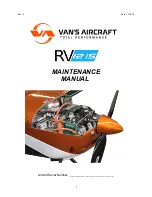
Oldtimer XXL-59
Building instructions - Oldtimer XXL-59
6
•
Once everything is aligned properly and weighted down, the ribs can be glued to the leading and trailing edges with
a single drop of cyano at each joint.
•
Glue the thick root rib K02 and the pre-drilled ribs K03 and K04 to the structure: these are 2 mm lower than the
remaining ribs in order to allow for the sheeting. When fitting these ribs ensure that they are exactly central in the
notches in the trailing edge, i.e. they should not rest on the building board.
•
Glue the thick tip-rib K07 and the rib K06 in place; these are also lower than the other ribs, and must be centred in
the notches in the trailing edge as previously described.
•
Glue the balsa strip K22 to the leading edge as a doubler, butting up against the ribs as shown.
•
The upper main spar K20 is fitted next: the square internal edges must be rounded off slightly so that they fit in the
machine-cut notches. Glue the spar to the ribs with a drop of white glue or thick cyano at each joint.
•
Sheet panels are added to the wings in the bays at the dihedral joints:
cut three 15 mm strips of 1 mm balsa sheet, cut them to the correct
length and glue them to ribs K07 and K06 between the leading and
trailing edges and the main spar.
•
Cut three strips 55 mm wide for the root sheeting panels, which are
glued to the ribs K02, K03 and K04. Glue these panels between the
leading and trailing edges and the main spar.
•
Allow the glue to set hard before removing the wing panels from the
building board.
•
Invert the wing and lay it down on the building board, resting on the
upper main spar. Pack up the trailing edge by about 10 mm, and weight
the whole panel down in this position.
•
The lower main spar can now be glued in place after rounding off the
internal edges as previously described.
•
The next step is to install the wing joiner tubes, but first the 15 mm
sheeting strips should be fitted at the outboard dihedral joint on the
underside: they are glued to the ribs K06 and K07.
•
The aluminium tubes can now be cut to length and the surfaces sanded
to provide a ‘key’ for the adhesive before they are glued in the root ribs.
•
Slip the carbon fibre rod through the wing pylon, and fit both inboard
wing panels onto it. Check that the root ribs rest snugly against the
pylon. If they do not, file out the aluminium tube holes to correct the fit.
•
Once you are confident that everything fits properly, glue the aluminium
tubes in the wing roots using 5-minute epoxy. Leave each tube
projecting by about three millimetres at the root rib.
•
Allow the epoxy to cure before gluing the spar webs, No. 26, to both
sides of the top and bottom spars in order to enclose the wing joiner
tubes.
•
The inboard wing panels are completed by gluing the bottom sheeting
panels and the root facing rib K01 to the structure.
•
Now sand the inboard wing panels lightly overall, and place them to one
side.
Outboard wing panels
•
Glue the leading edge K17 to the tip block K19 and the trailing edge K16 to form the initial assembly.
•
Push the ribs K06 to K14 into the notches ‘dry’ (no glue). Note that the ribs K06 and K07 must again be centred in
the notches in the trailing edge to allow for the top and bottom sheeting.
•
Lay the assembly over the building board, align all the parts carefully,
then glue the ribs to the leading and trailing edges using thin cyano.
•
Glue the top main spar K19 to the structure. As mentioned earlier, note
that the internal edges of the spar should be rounded off slightly to
allow for the rounded edges of the machine-cut notches in the ribs.
•
The leading edge doubler K21 can now be fitted.
•
The top sheeting of the two ribs K06 and K07 again consists of 15 mm
wide strips of 1 mm balsa sheet.
•
Once everything is dry, remove the wing panels from the building board,
invert them, glue the bottom spar K19 in place, and attach the sheeting.
•
Sand the outboard wing panels smooth overall.
Joining the wings
•
The first step is to saw off the excess strip material flush with the facing
ribs.
•
Now use a sanding block to bevel the mating ribs of the inboard and






















